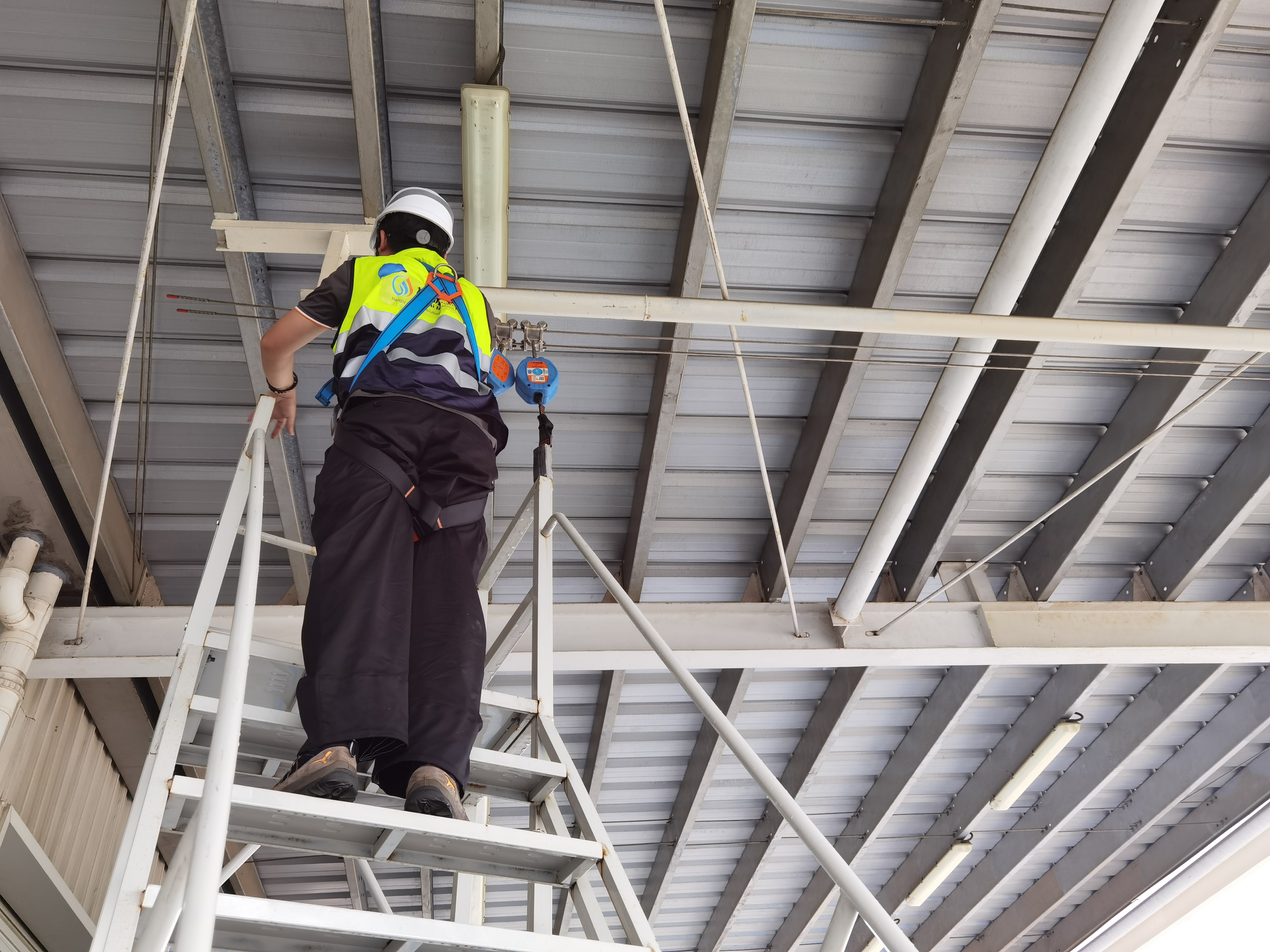In any work-at-height environment, fall protection equipment is a critical safeguard for worker safety. Even minor damage or neglect can lead to catastrophic consequences in the event of an accident.
Many companies purchase certified equipment but overlook the importance of regular inspection and maintenance. Checking fall protection systems is not just a routine task — it’s a vital process that ensures every component functions reliably when it matters most.
1. Why Inspecting Fall Protection Equipment Matters
1.1 Ensure Worker Safety
The reliability of a fall protection system is directly tied to a worker’s life. Any webbing wear, metal deformation, or absorber aging can cause equipment failure during a fall.
Regular inspections help identify potential hazards early, preventing accidents before they happen.
1.2 Compliance with Standards and Regulations
Fall protection systems must comply with international standards such as OSHA, ANSI Z359, or the EN series in Europe.
Routine inspections help maintain compliance and reduce legal and liability risks.
1.3 Extend Equipment Service Life
With consistent maintenance and inspection, the service life of fall protection gear can be significantly extended. This prevents premature damage caused by neglect and reduces long-term safety costs for businesses.
2. Main Components of a Fall Protection System
A complete personal fall arrest system (PFAS) typically includes:
Full body harness
Anchor point
Connecting device
Self-retracting lifeline (SRL) or energy-absorbing lanyard
These components work together to prevent falls and minimize impact forces if a fall occurs.
3. How to Inspect Fall Protection Equipment
3.1 Daily Pre-Use Inspection
Before every work-at-height task, workers or safety supervisors should perform a pre-use check to visually and manually detect obvious defects and confirm equipment readiness.
Check the following:
Webbing and stitching for fraying, stiffness, or cuts
Metal components (D-rings, buckles, adjusters) for corrosion, cracks, or deformation
Buckles and adjusters for smooth operation and secure locking
Ensure labels and serial numbers remain legible
3.2 Annual Comprehensive Inspection
At least once a year, conduct a full inspection and recertification performed by a qualified inspector to verify ongoing performance and safety.
This includes:
Strength, functionality, and appearance testing per GB and EN standards
Structural stability and load-bearing verification of anchor points
Issuance of a written inspection report, retained until the next cycle
4. Detailed Inspection Methods for Each Component
Harness
Check for cuts, fraying, or abrasions on webbing
Ensure stitching is intact and firm
Inspect buckles and D-rings for rust or deformation
Lifeline and Energy Absorber
Confirm the energy absorber has not been deployed, contaminated, or exposed to moisture
Check the rope for chemical, oil, or seawater corrosion
Ensure all connection points are secure and free of cracks or aging
Anchor Point
Verify the mounting structure is solid and stable
Inspect for cracks, corrosion, or weld separation
Confirm load capacity meets EN 795 requirements (minimum 12 kN)
Connectors and Hooks
Check for smooth operation and automatic locking
Look for wear or cracks on the surface
Perform lubrication and spring tension tests every six months
5. Who Is Responsible for Fall Protection Equipment Inspection?

Inspections must be conducted by qualified and experienced professionals, with clear roles at each level:
| Role | Responsibilities |
|---|---|
| User / Worker | Conduct pre-use inspections before each task. Stop using equipment immediately if abnormalities are found and report to the safety officer. |
| Safety Manager / Supervisor | Organize regular internal inspections and monitor usage, storage, and maintenance conditions. |
| Third-Party Testing or Certification Body | Conduct annual comprehensive inspections and structural evaluations per national (GB) and European (EN) standards, issuing official compliance reports. |
All inspection records must be documented, archived, and traceable to ensure continuous compliance.
6. Common Damage Types and Recommended Actions
| Damage Type | Common Cause | Recommended Action |
|---|---|---|
| Webbing fraying or rough edges | Long-term abrasion or UV exposure | Stop use immediately and replace |
| Metal corrosion | Humid or chemical environment | Clean, dry, and assess for replacement |
| Broken stitching | Overloading or aging | Replace the entire harness |
| Deployed energy absorber | Previous fall or shock load | Dispose of immediately |
| Loose or cracked anchor point | Overload or improper installation | Reinstall and test structural strength |
7. Professional Support from Fupan Safety Tech
Fupan Safety Technology is always ready to help you build a safe and reliable fall protection system — from professional inspections and technical training to standard-compliant equipment recommendations.